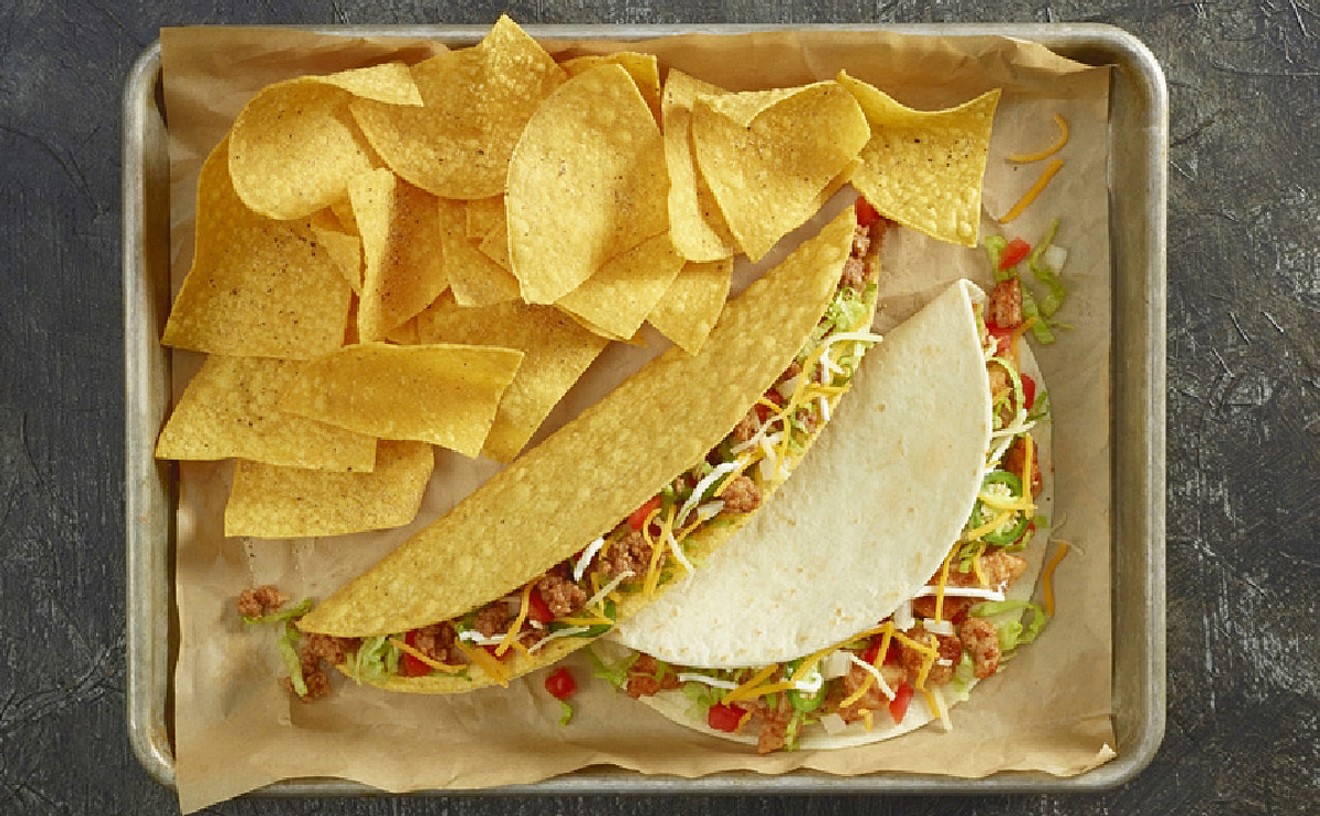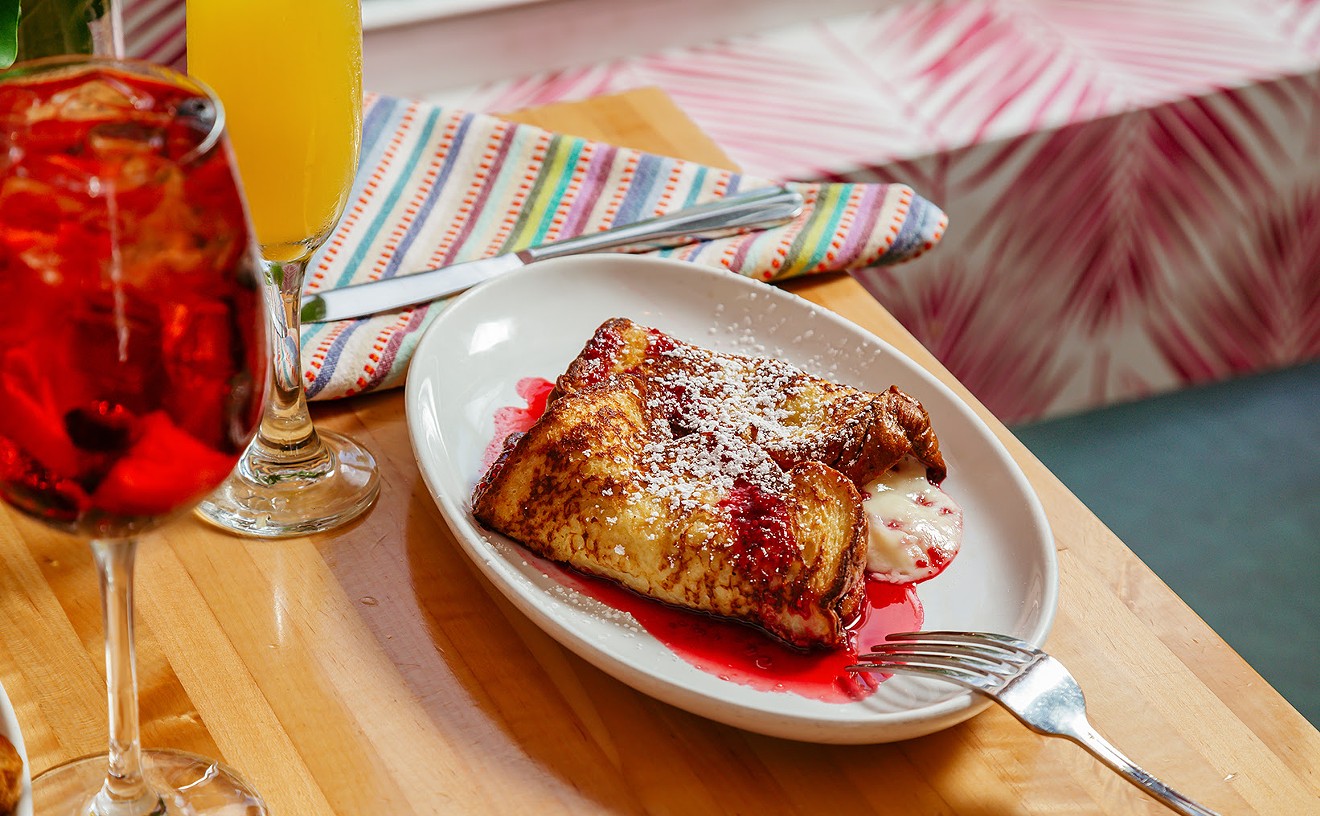It was 20 years ago when partners Efrain Vega and Douglas Rodriguez opened the groundbreaking Yuca in Coral Gables. While running the radically innovative Cuban restaurant, Rodriguez was named the James Beard Foundation's Rising Chef of the Year. Then came the ascent.
It began at Patria in New York, where he honed his signature Nuevo Latino cuisine, and was affirmed when Newsweek called him one of the "100 Americans who will influence the coming millennium." That led to numerous restaurants, the current roster ranging from Philadelphia to Arizona, as well as a pair in Miami Beach — OLA at the Sanctuary and now the new D. Rodriguez Cuba at Hotel Astor.
The Astor hasn't had a hit since Johnny Vinczencz was at the helm from 1995 to 2000 (the most recent tenant, Maison d'Azur, lasted no longer than a French kiss). Blame for the successive failures cannot be pinned on the elegant dining room, which with dark woods, subdued lighting, and linen-draped tables on terrazzo floors seems like the vision of a swank Havana supper club. The outdoor patio, lushly secluded from Washington Avenue by tall, thick hedges, is a romantic garden of jasmine vines, gurgling water sculptures, and lanterns suspended from oak trees.
The style of cooking and presentation don't fall far from the Rodriguez tree. Staples from menus past include plantain-crusted mahi-mahi, oxtail stew, crisp croquetas, kooky ceviches, and mini tacos lined up in a wooden stand. Yet with its bacalao fritters, fritta sliders, and medianoche sandwiches, much of the fare is rooted in Rodriguez's roots (he grew up in Miami, the son of Cuban immigrants). D. Rodriguez, in fact, is one of the few dining establishments in town where you can indulge in creative, contemporary cuisine from the island. Gastronomists from other cities are no doubt astounded to discover this.
Rodriguez's ceviches, once astounding themselves, were seen as radical departures from the lime/onion/cilantro norm. Nowadays, you're as likely to encounter a creamed herring ceviche with bagel croutons as a traditional rendition, but D-Rod remains the master of marinated raw fish (and credit to executive chef Luis Flores for orchestrating his concepts). Witness the tiradito of paper-thin snapper slicked with sour orange juice — a sleek, tangy tarp for the ceviche confetti of conch, red pepper, tomato, and crisp fried onion threads.
Empanaditas were enticing too. An oxtail version brought soft, flaky crusts encasing savorily braised meat, the four small pieces to be swiped through salty/sweet contrasting purées of black olive and scrumptious smoked pineapple.
Plantain-crusted mahi-mahi featured three skewered fingers of the fish, each atop a tasty mix of sweet fufu (mashed plantains) and smoked red onions. Problem was that the mahi-mahi's soggy, lukewarm breading suggested either a reheating or an extended sit under the heat lamps (there was, in fact, an overly long wait for appetizers).
Yuca-crusted flatbreads ("Cuban pizza") likewise lacked crispness. We sampled the tuna rendition: eight canape-size rectangles aligned on a plate and adorned with delicate slices of ahi, cilantro-flecked roast garlic aioli, and dots of spicy chili paste.
It is rare to rave over a salad — there are so few versions of distinction around town — but here's the exception: rows of pale orange calabaza purée, with dark pumpkin seed oil pooled among them, leading to a silo of perky watercress sprigs sumptuously swathed in goat cheese.
As is true with many other chefs, Rodriguez's starters tend to outshine his entrées. This is partly owed to the nature of appetizers, which are inherently more conducive to bright innovation. That said, the best main course we tried was rabo encendido en lata, or oxtail stew served in a can. Beyond the clever presentation are chunks of braised meat bolstered with tomato, capers, olives, and piquant red wine sauce — the bold flavors resting upon a bed of roasted cauliflower purée like a brilliant mind on a soft silk pillow.
An enchilado, which apparently is not the male version of an enchilada, featured a Florida lobster tail-in-shell sliced into five sections, each bathed in tomato sauce vividly spiced with cachuca pepper. A row of green, tomatillo-infused rice running parallel to the lobster lineup touted tasty notes but was hardly warmed; the plate was downright cold.
The lobster was likely lingering and cooling while our arroz con pollo completed cooking, for the latter arrived steaming from the stove. That said, it wasn't so hot — or, more accurately, wasn't any better than that found at most Spanish restaurants. The hefty portion mingled morsels of dark thigh meat with baby lima beans and strips of roasted peppers in softly cooked saffron rice; moist, char-grilled slices of chicken breast were fanned across the top. Faint drizzles of smoked garlic aioli that might have lent a differentiating accent were too faint for impact.
Had an order of "slow-roasted pork" been merely slow-roasted, it probably would have earned raves; the naturally sweet Kurobuta flavor gets enhanced further via a three-day brine. But the four fat-capped chunks of pork receive a dunk into the deep fryer after brining and roasting, which successfully crisped the fat but robbed the meat of its characteristic juiciness. Slices of cachuca pepper and some oregano mojo on the side might have helped a tad, but one of my guests offered a backhanded compliment by deeming it comparable to the chicharrones at El Palacio de los Jugos. It is more akin to a superior twice-cooked pork butt dish from Patria that I had years ago.
The waiters on both of our visits were poorly versed on the menu, and service was generally sloppy — menus not picked up, servers not knowing where to put plates down, the check not getting delivered or collected in timely fashion. Ordinarily, it might be suggested that more staff is needed, but employee names and positions are listed on the menu — all 45 of them, including a general manager and two front-of-house captains.
Pitchers of mojitos, Cuba libres, rum punch, and hand-blended grapefruit or watermelon daiquiris help lend a festive atmosphere to the room. I wanted to join in with a specialty "bloody Maria" cocktail smoked with chipotle, but they were out. "I'm not sure what we don't have — maybe it's the tequila," we were told. At least teetotalers are taken care of, with natural tropical fruit juices and nectars such as passion fruit, guava, and watermelon — as well as milk shakes.
Wine aficionados won't be disappointed either. Most selections on the modest list are from California, South America, and Spain and after generous markup range from $50 to $70. Included are a few familiar low-end labels such as Clos du Bois ($42) and high-end boutique picks such as Sea Smoke by Foxen, a California Pinot Noir ($162).
Food prices, incidentally, work like this: Most starters run $8 to $15, main courses are kept below $30, and desserts are $5 to $10.
Sorbets in flavors such as tamarind-vanilla and mango-ginger-lime represent the most sensible, scintillating finish to this hearty, fry-heavy Latino fare; plus they really are delicious. Yet if you're eager to try something that cannot be enjoyed elsewhere, or are dining with a guest you wish to impress, do what many folks do (with gentle prodding from the waiters) and order the chocolate cigar. The frozen bittersweet chocolate ganache stogy, one of Rodriguez's whimsical old tricks, comes coated in powdered cocoa and presented in a cigar box. These days, he has upped the ante by including a little puff of "chocolate smoke" that escapes the box when the titillated customer first opens it. A diverse collection of real cigars is also proffered.
There's a lot to like about D. Rodriguez Cuba, but the dining experience is decidedly uneven at this point. We hope the quality will rise in a manner similar to the chef's career.










